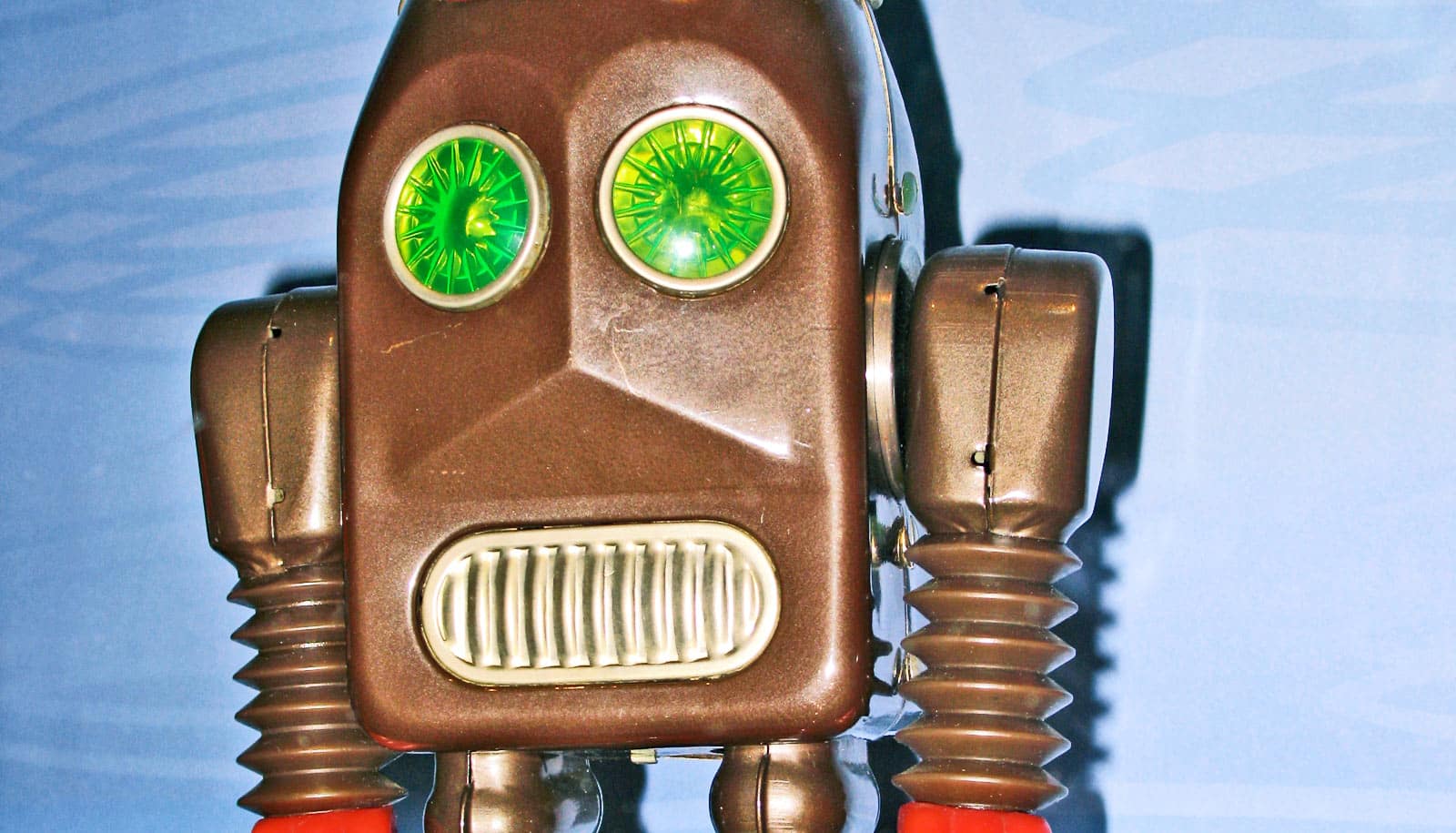Cheery robots may give people the creeps and serious robots may actually ease anxiety—but it depends on how we perceive the robot’s role in our lives.
In a study of robot use in a retirement home, senior citizens were more likely to consider an assistant robot as socially attractive and intelligent when they thought its demeanor was cheery, according to S. Shyam Sundar, professor of communications and co-director of the Media Effects Research Laboratory at Penn State.
“We were actually surprised to find out that they wanted companion robots to be serious and assistant robots to be playful.”
However, the seniors were more willing to accept robots labeled as companions if the machine had a more serious demeanor.
“We were actually surprised to find out that they wanted companion robots to be serious and assistant robots to be playful,” says Sundar. “But it’s pretty clear from our data that a serious demeanor adds credibility to a companion robot, whereas a playful demeanor softens the tension when interacting with an assistant robot.”
Assistant robots are designed to help people with everyday tasks, such as dispensing medications, whereas companion robots are designed to support people emotionally, serving as friends or pets, according to the researchers, who report their findings in the International Journal of Human-Computer Studies.
Knowing how people might react to a robot’s demeanor and role could help designers make robots that people are more likely to accept and use, according to Sundar.
Human or android? You know in less than a second
“The variations of role and demeanor are shown to indirectly affect robot use intentions, and are therefore important to understand, as more initiatives target senior citizens as a prime user population for social robotics,” says Sundar.
Both companion and assistant robots will likely find roles in hospitals and retirement homes to assist senior citizens with the physical, mental and emotional challenges of growing old, he adds.
“In the future, we might see robots working in the healthcare system to provide senior citizens with physical assistance and emotional support in the comfort of their own homes,” says Sundar. “Therefore, it’s becoming more important to understand how we can promote healthy communications between senior citizens and robots.”
Older adults worry ‘robot butlers’ will take over
The researchers recruited 51 senior citizens at a central Pennsylvania retirement home. The participants were assigned to one of four conditions—playful assistant robot, serious assistant robot, playful companion robot, and serious companion robot.
Participants were told that the robot—about 4 feet tall and equipped with a robotic arm, web camera and screen—was either a companion or an assistant. They used a smartphone to tell the robot to approach. The robot would then approach and say hello to the participant. Two vocal recordings were used to manipulate the robot’s demeanor. The higher-pitched voice was considered more playful. The serious voice had limited changes in inflection and tone.
After the interaction was over, the robot moved back to its original position and the participants then filled out a questionnaire on the interaction.
Sundar worked with researchers at the National University of Singapore, the University of Florida, and City University of Hong Kong on the study.
Source: Penn State



